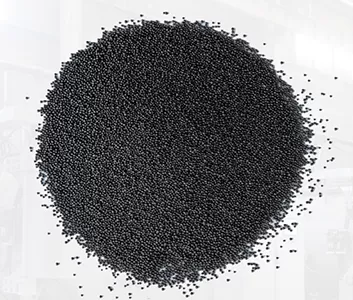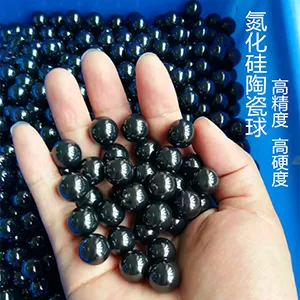Ceramic balls encompass various types, each with distinct compositions and properties, including alumina, zirconia, silicon nitride, silicon carbide, and far - infrared ceramic balls, serving diverse industrial, medical, and daily applications. Their unique characteristics make them indispensable in specific scenarios, from heavy - duty grinding to precision medical devices.
Alumina ceramic balls, composed mainly of aluminum oxide, are the most common type due to their cost - effectiveness and good wear resistance. They find extensive use in grinding processes, such as in ball mills for minerals, ceramics, and paints, where their hardness helps reduce particle size efficiently. Additionally, they act as packing in chemical columns, facilitating distillation and absorption processes while resisting mild chemical corrosion.

Zirconia ceramic balls, made from zirconium dioxide, stand out for their exceptional toughness and impact resistance. This makes them suitable for high - stress applications like automotive bearings and fuel pumps, where they withstand repeated mechanical stress without shattering. In the medical field, their biocompatibility allows use in dental implants and joint replacements, ensuring compatibility with human tissues. They also perform well in precision grinding of materials like glass and semiconductors, thanks to their smooth surface and dimensional stability.
Silicon nitride ceramic balls, crafted from silicon nitride, excel in high - temperature and high - speed environments. Their low density and excellent thermal shock resistance make them ideal for aerospace components, such as turbine engines and aircraft bearings, where they reduce weight and maintain performance under extreme heat. They are also used in high - speed machine tools, contributing to reduced friction and improved energy efficiency.

Silicon carbide ceramic balls, known for extreme hardness and high thermal conductivity, are perfect for harsh industrial settings. They are widely used in mining and mineral processing as grinding media for hard ores, enduring intense abrasion. In the electronics industry, their thermal conductivity aids in heat dissipation for high - power devices, preventing overheating. They also serve as packing in high - temperature reaction vessels, withstanding corrosive gases and elevated temperatures.
Far - infrared ceramic balls, infused with minerals that emit far - infrared radiation, have unique applications in healthcare and daily life. They are integrated into saunas, massage tools, and water - treatment systems, where their radiation promotes blood circulation, relieves muscle tension, and improves water quality by reducing cluster sizes. In agriculture, they enhance crop growth when used in irrigation, as the radiation may stimulate plant metabolism.
Each type of ceramic ball, with its specific properties, addresses distinct needs across industries, highlighting the versatility of ceramic materials in modern technology and daily life. Their continued development ensures expanding applications in emerging fields, from advanced manufacturing to wellness innovations.



